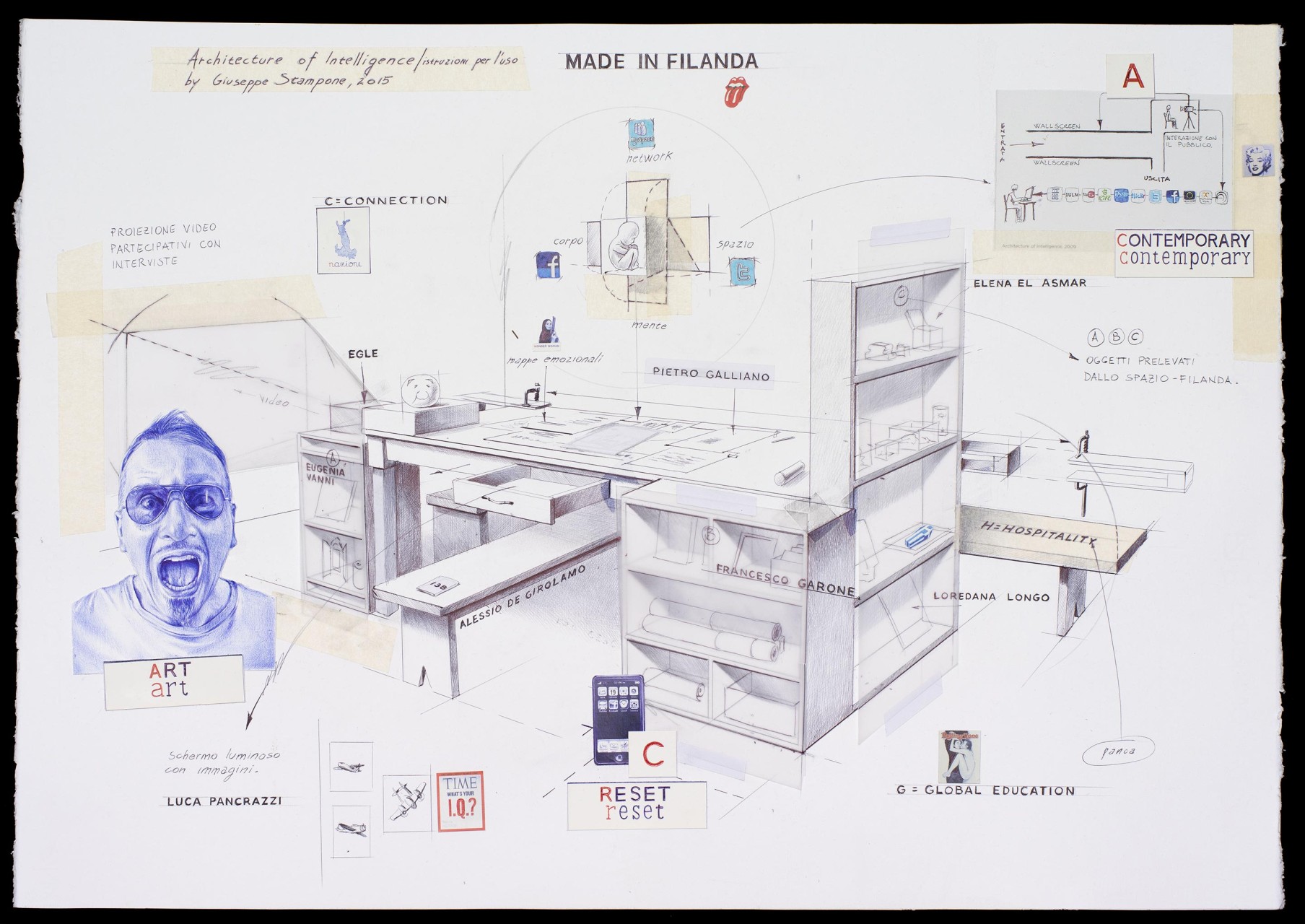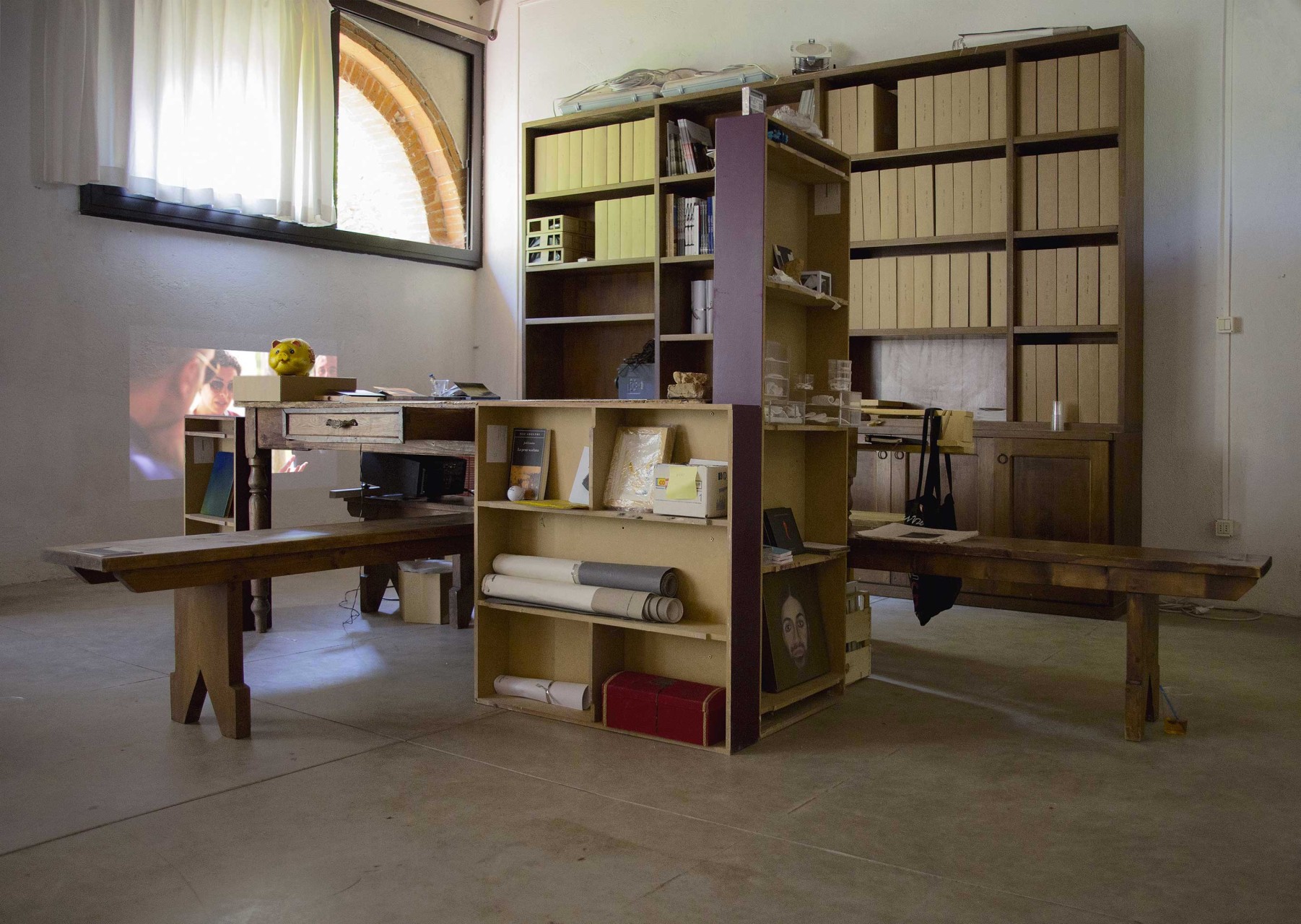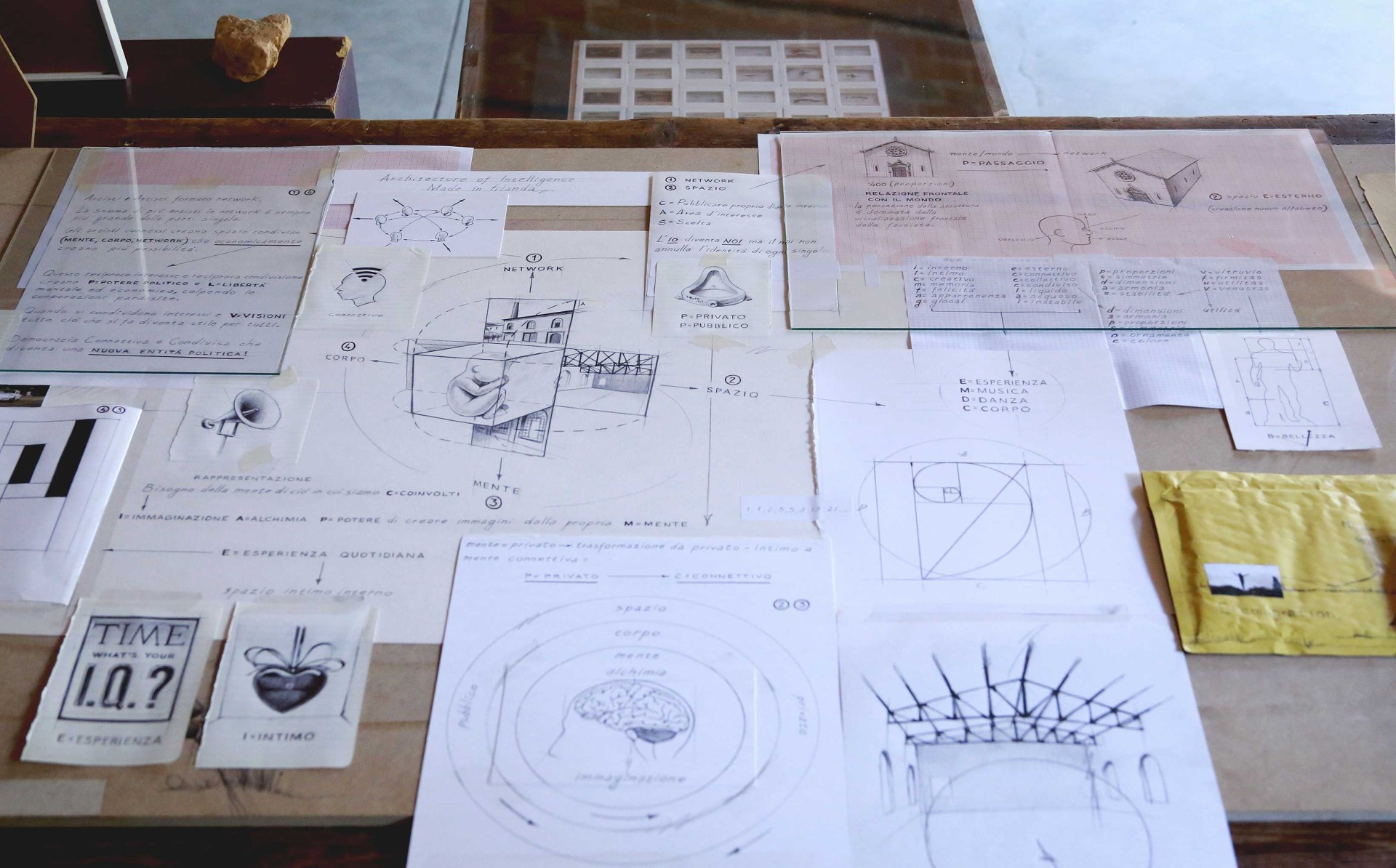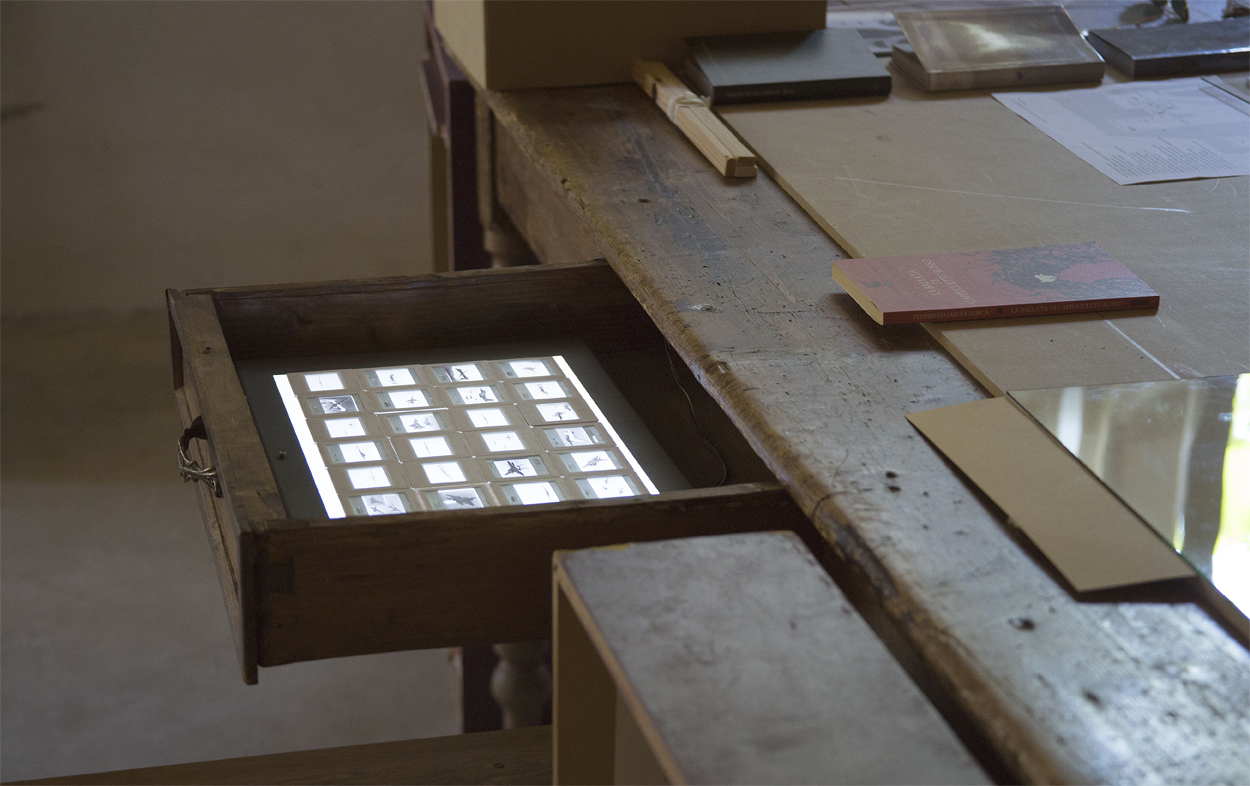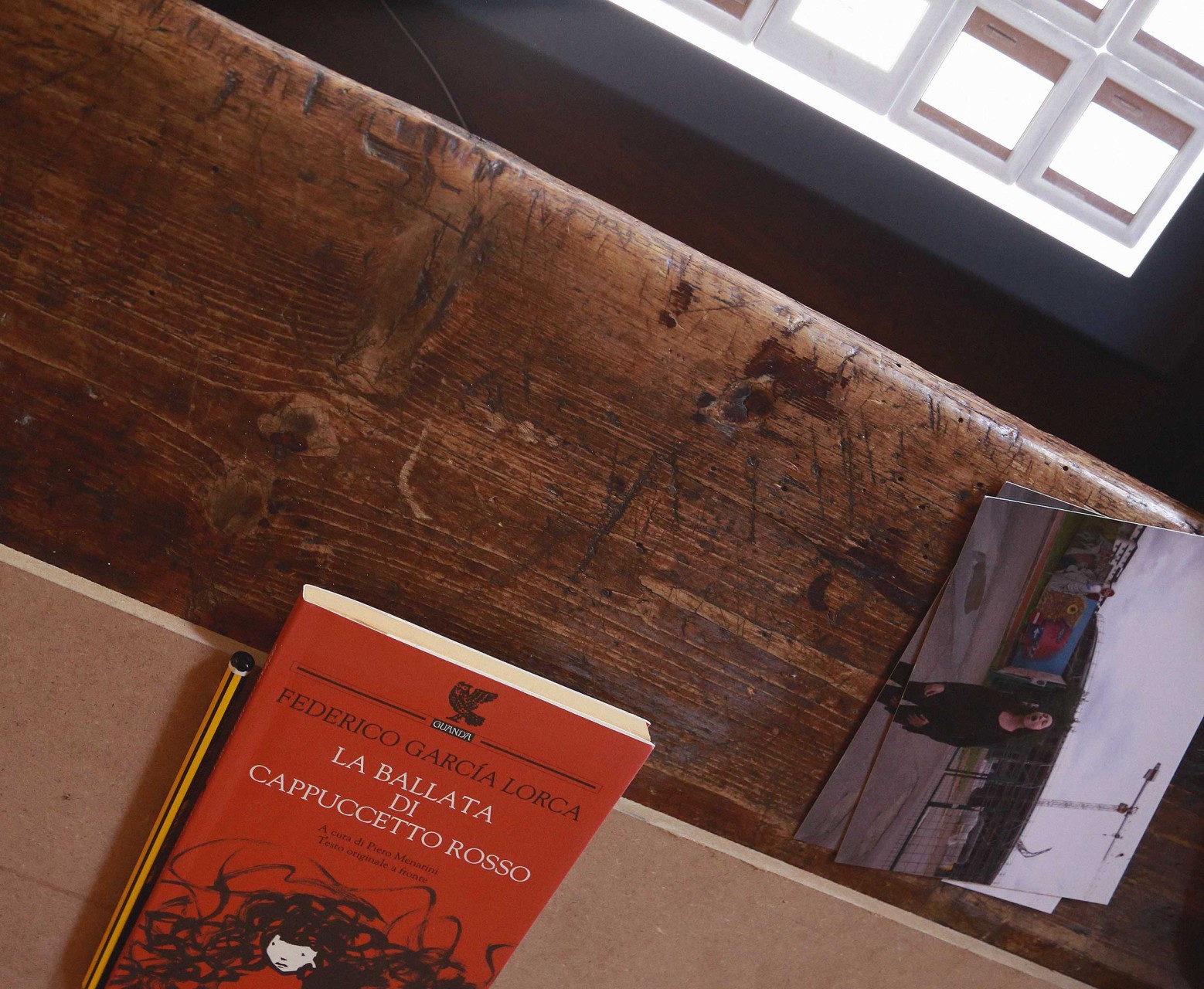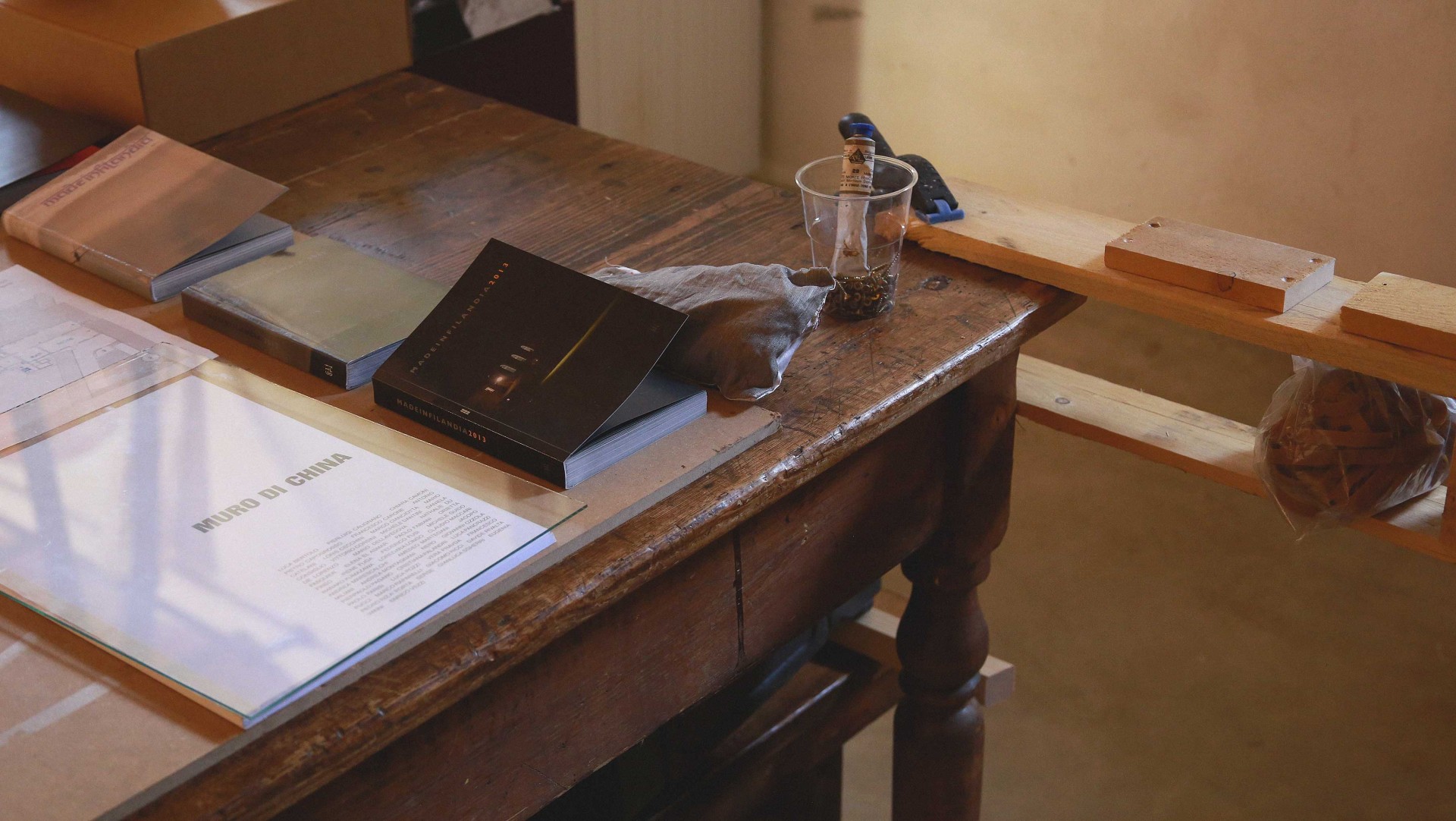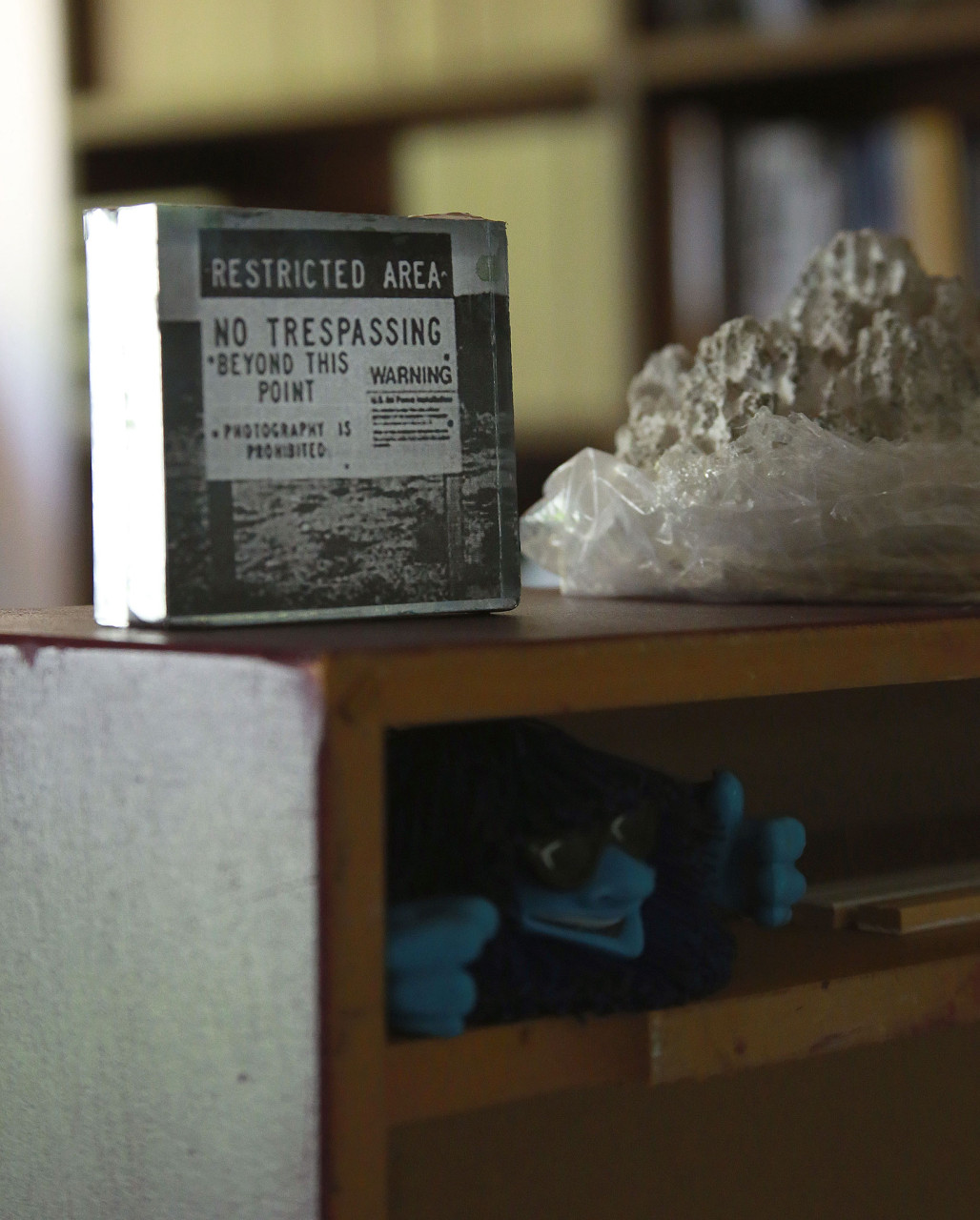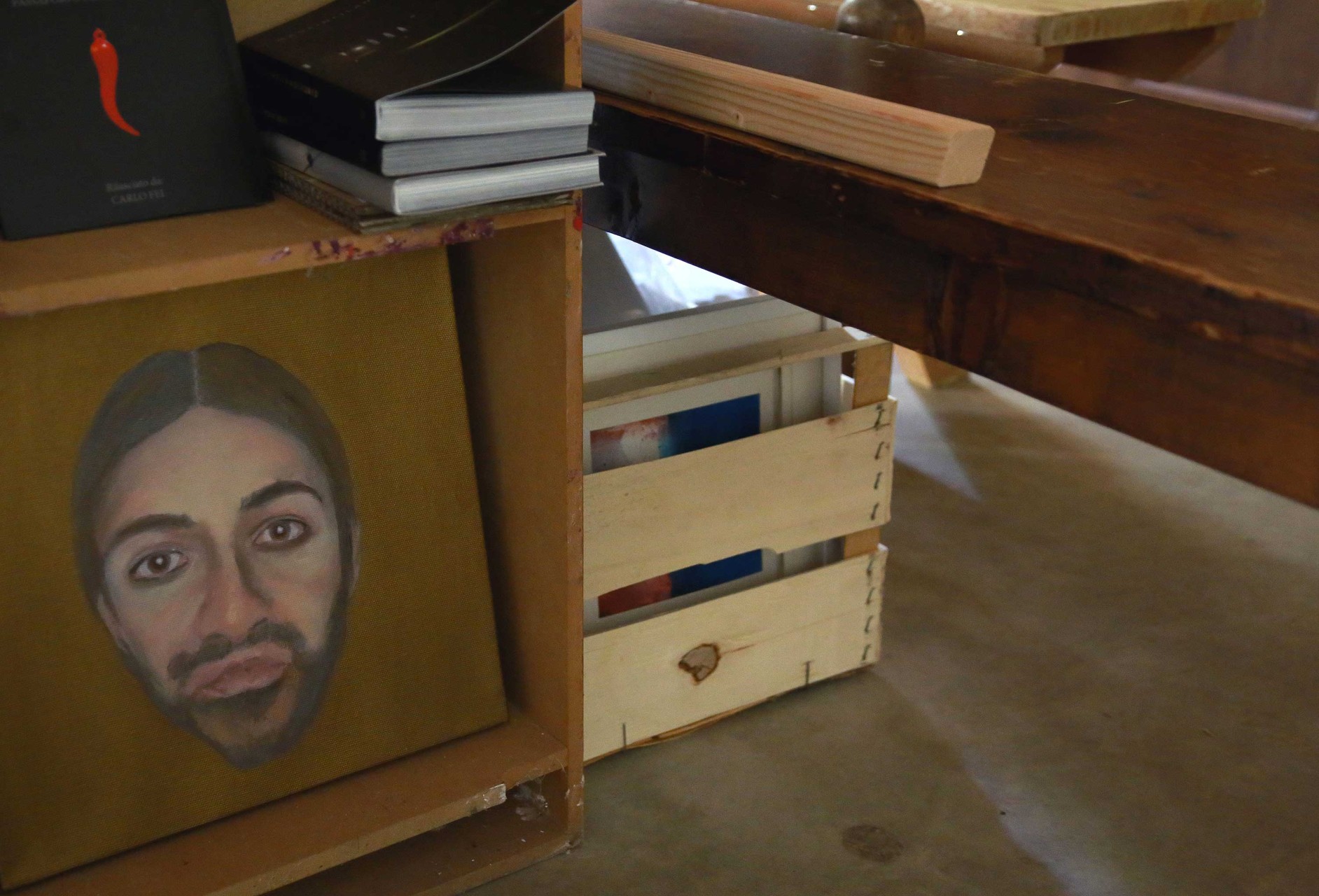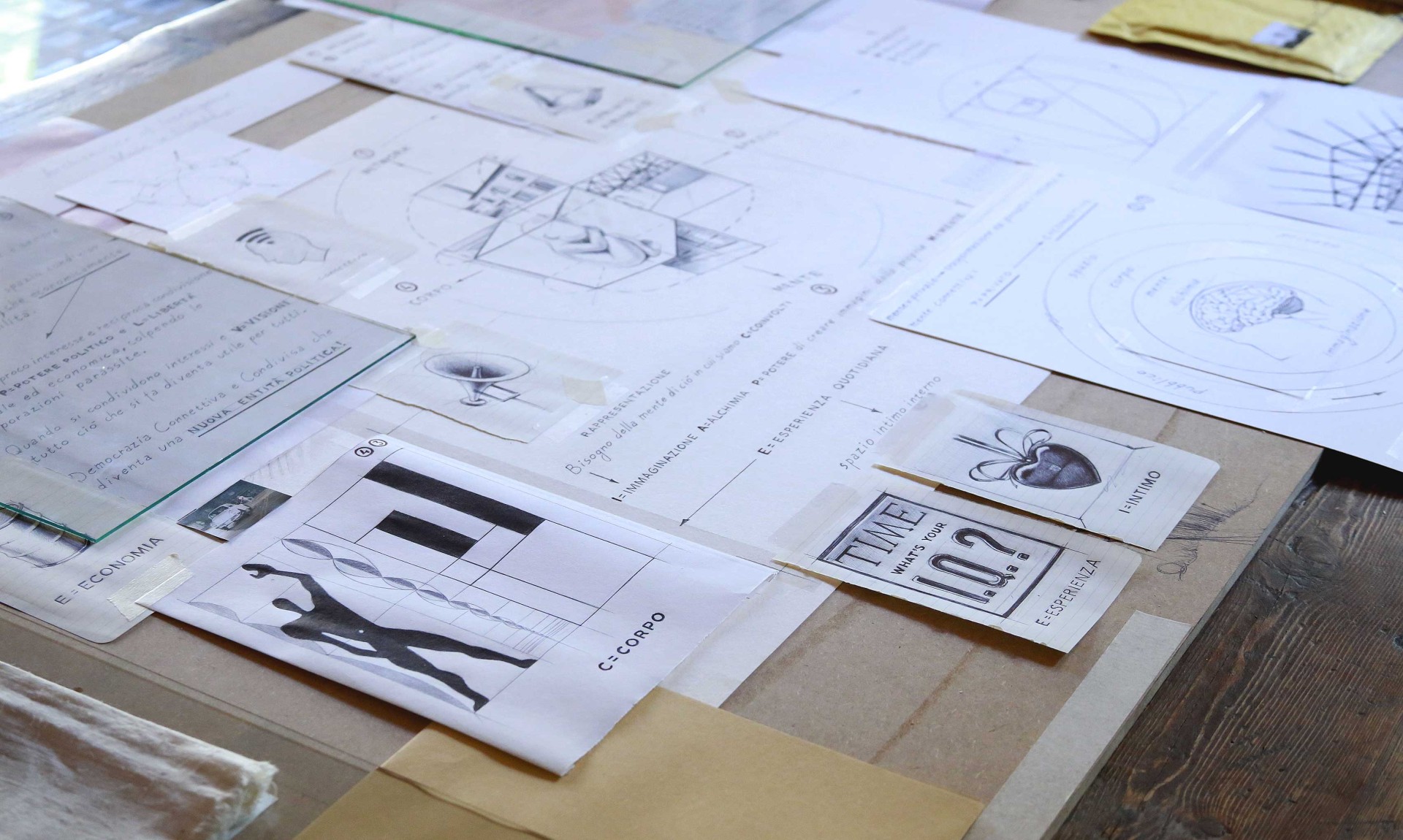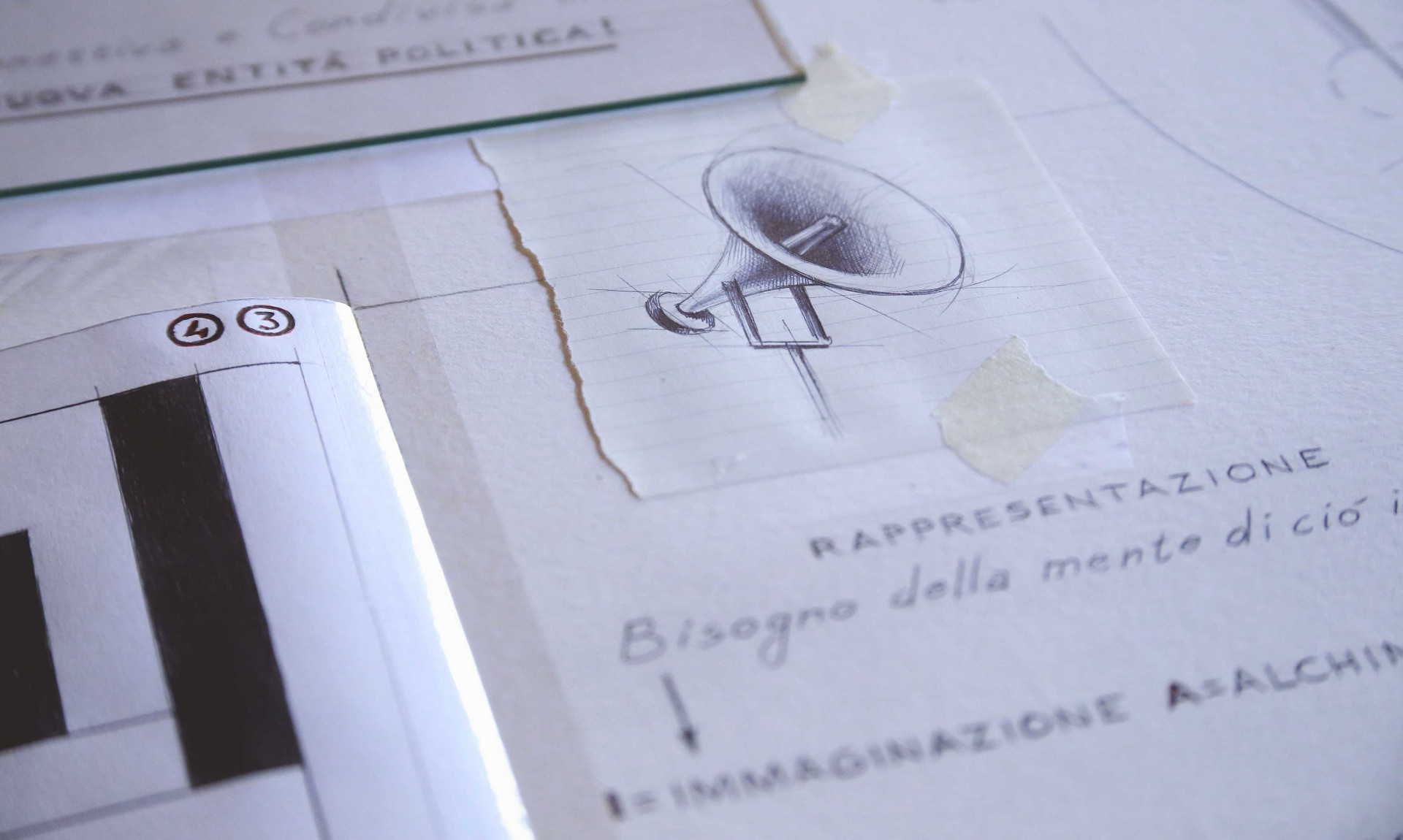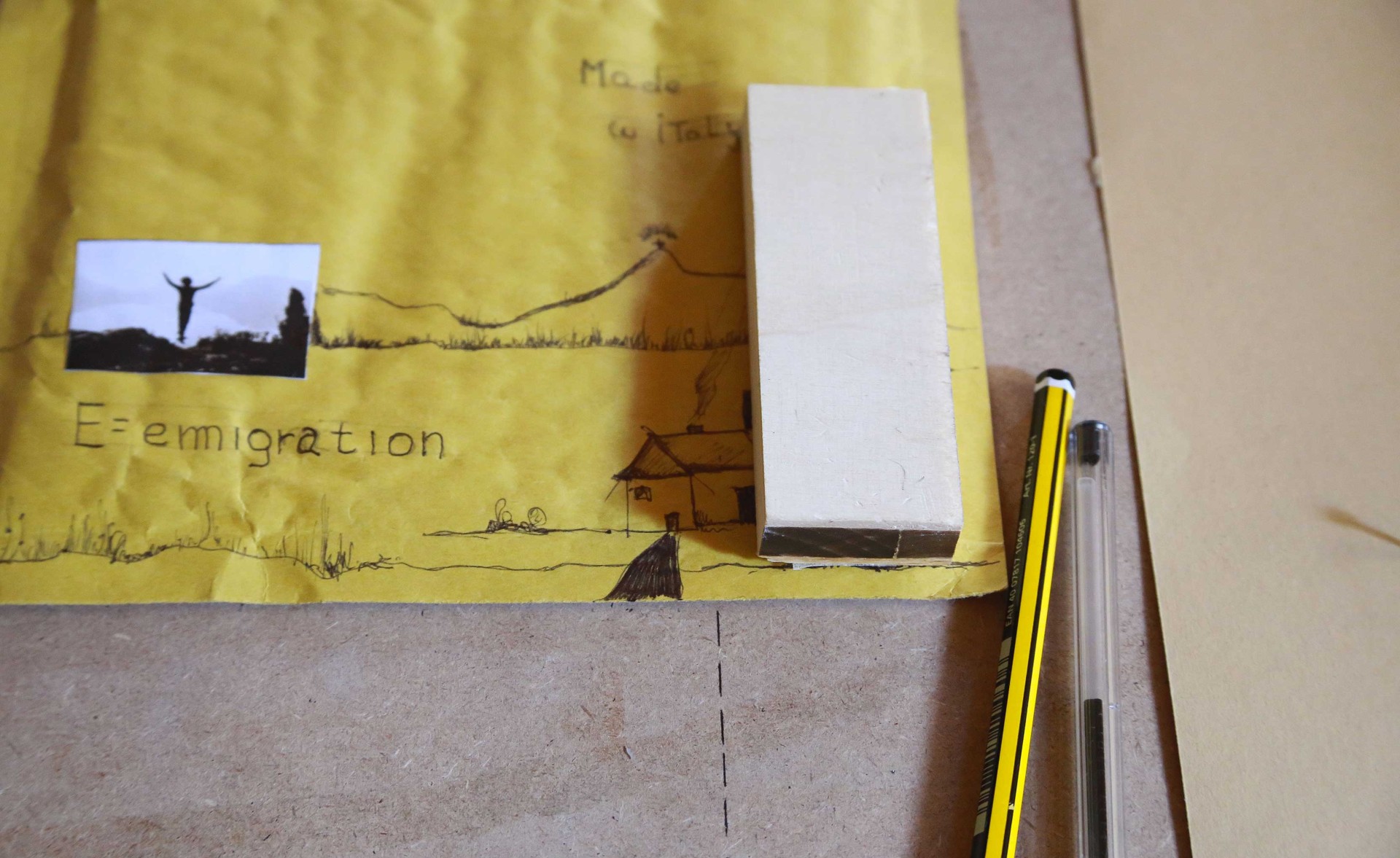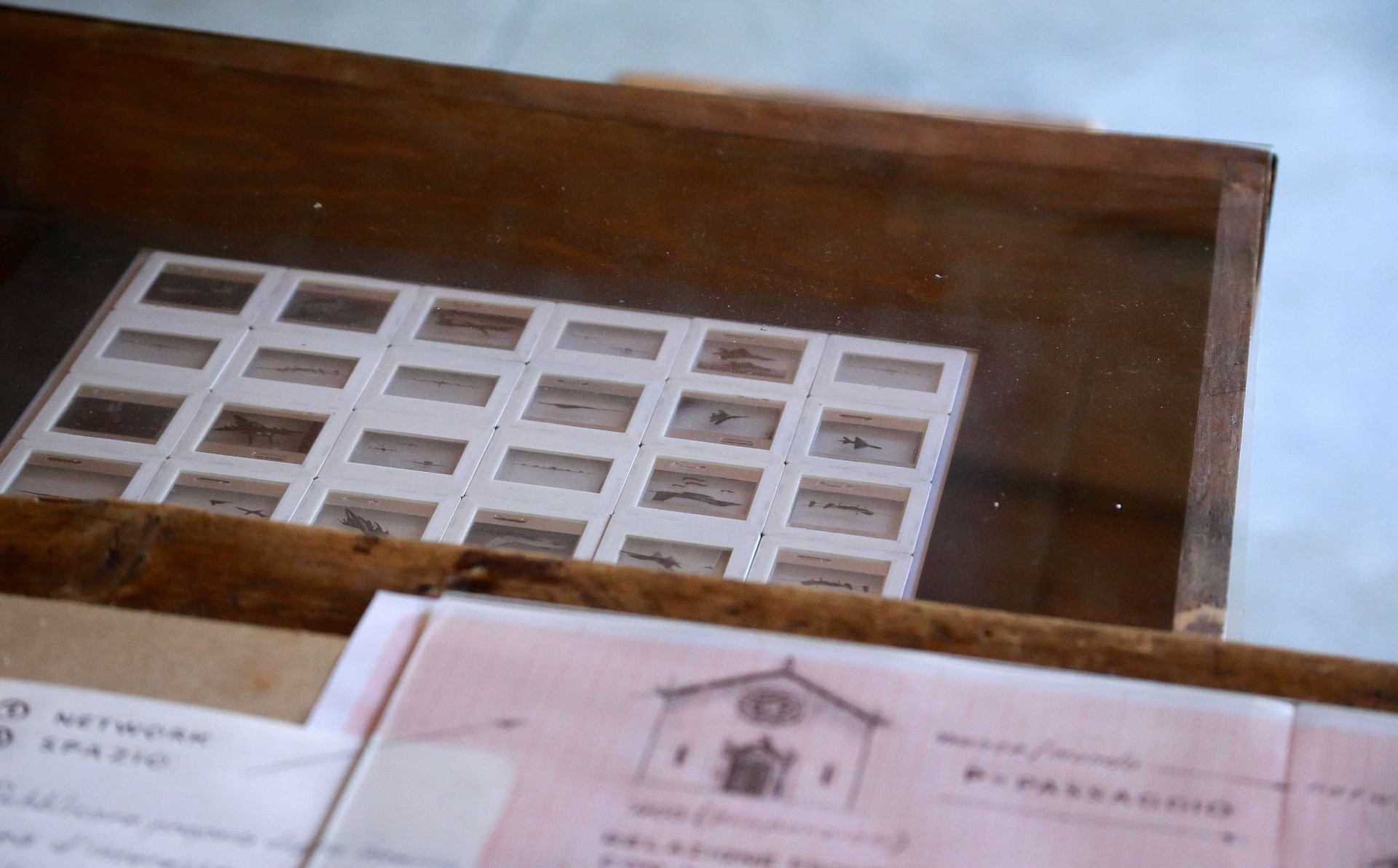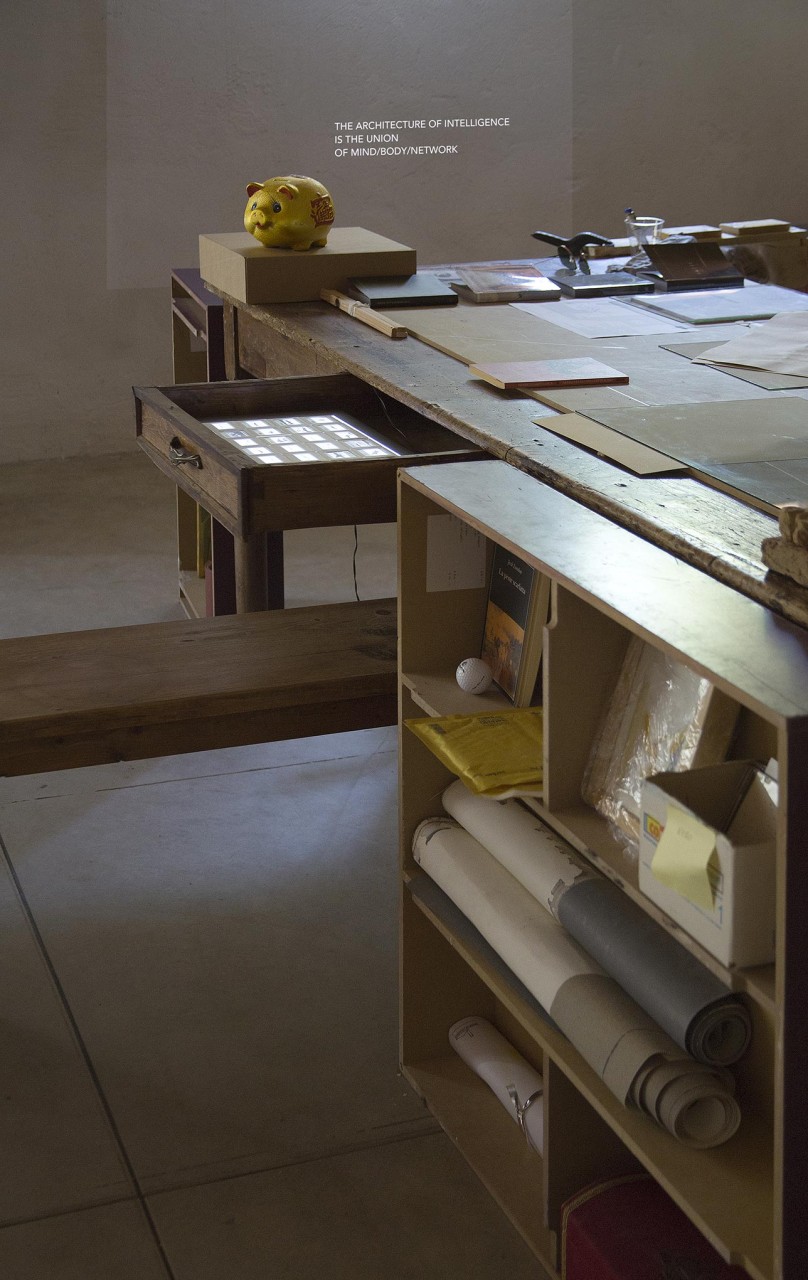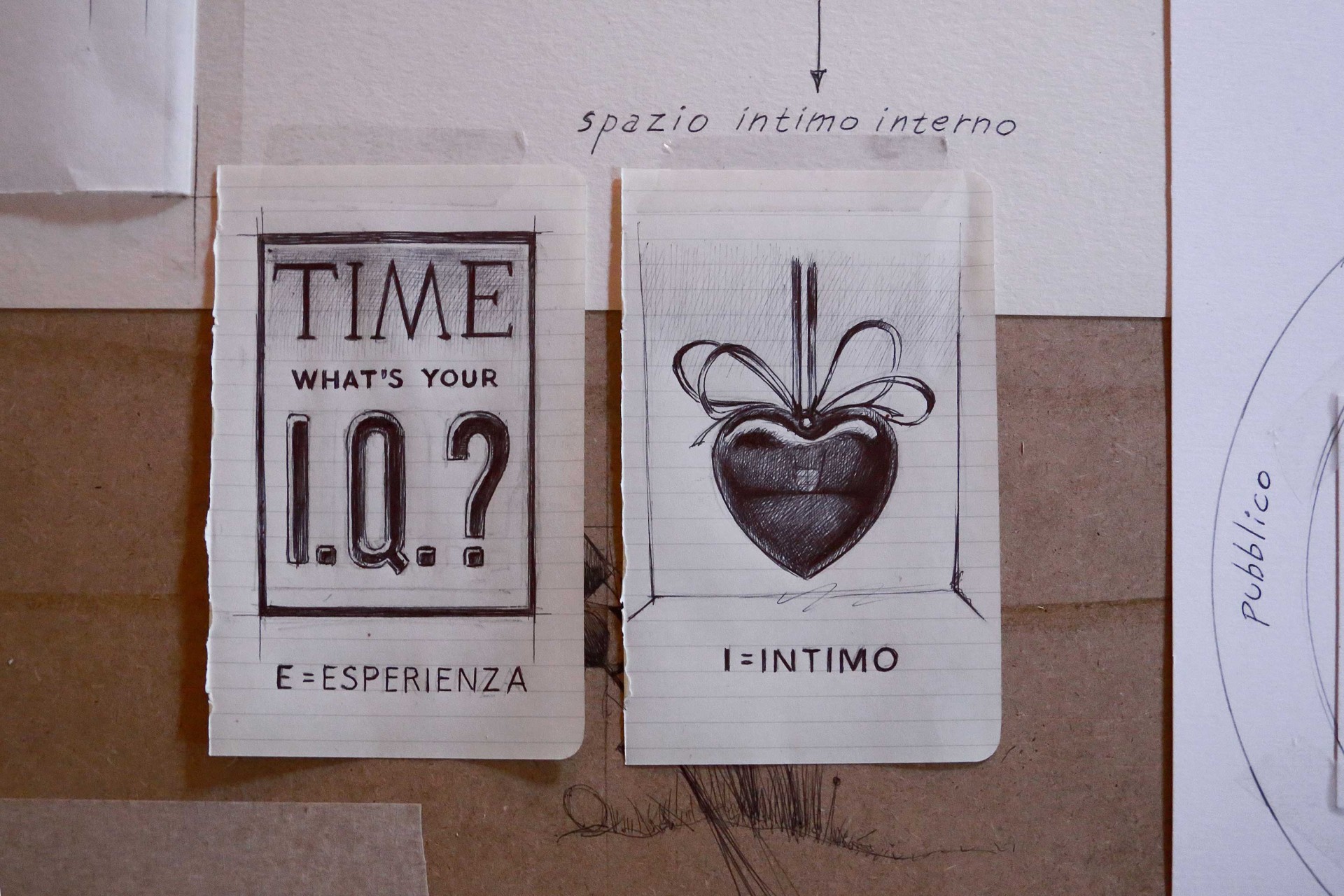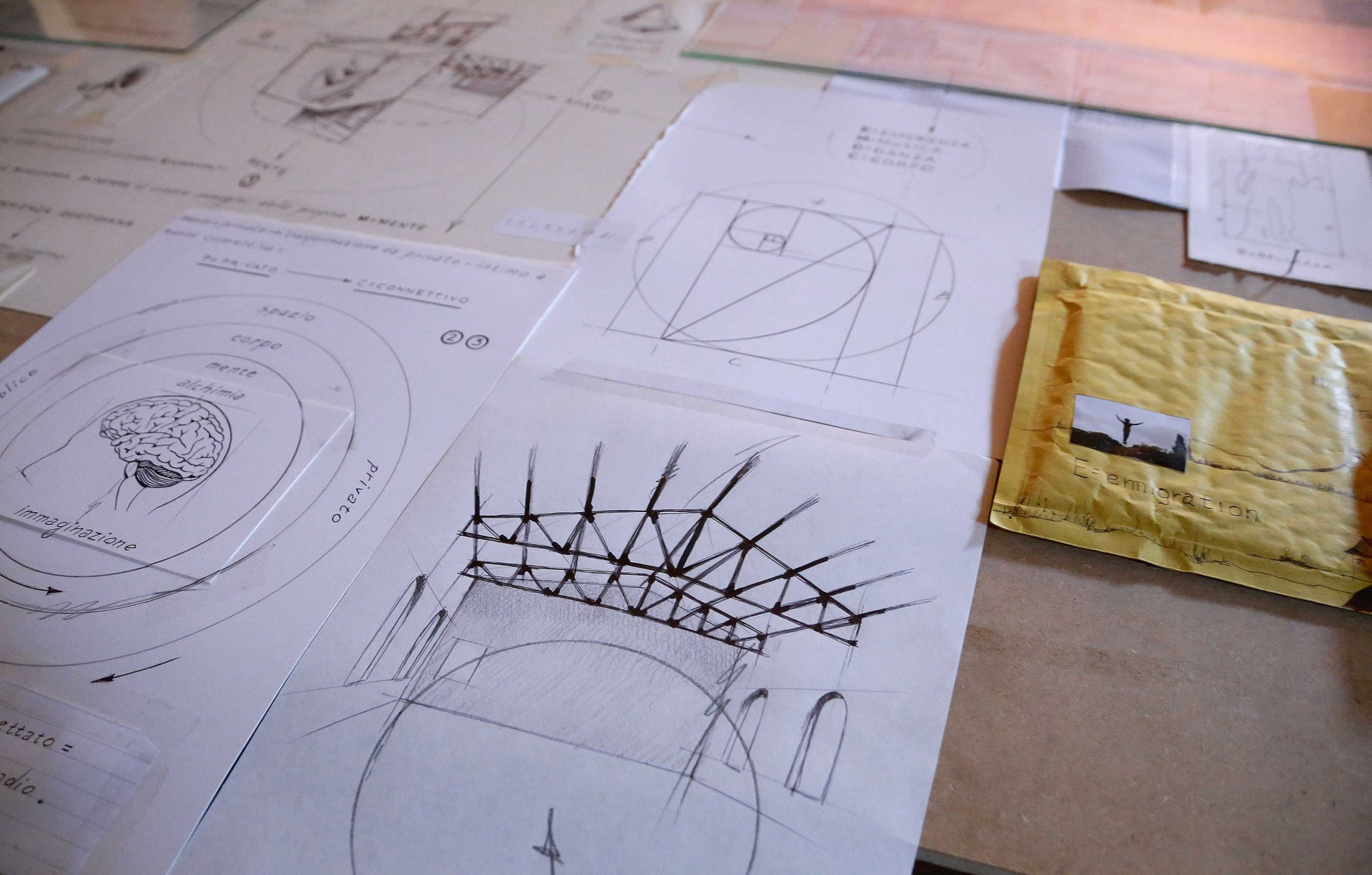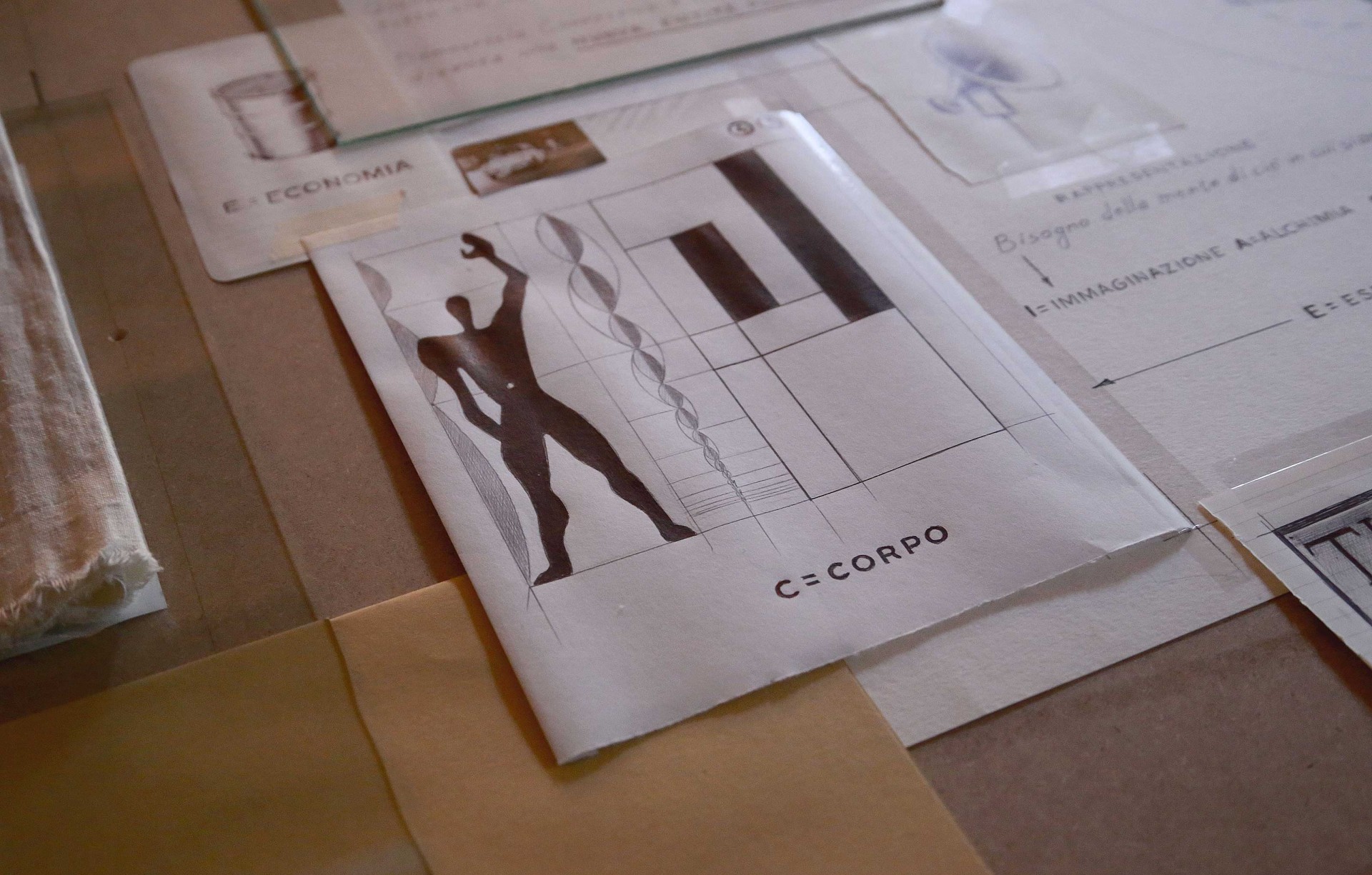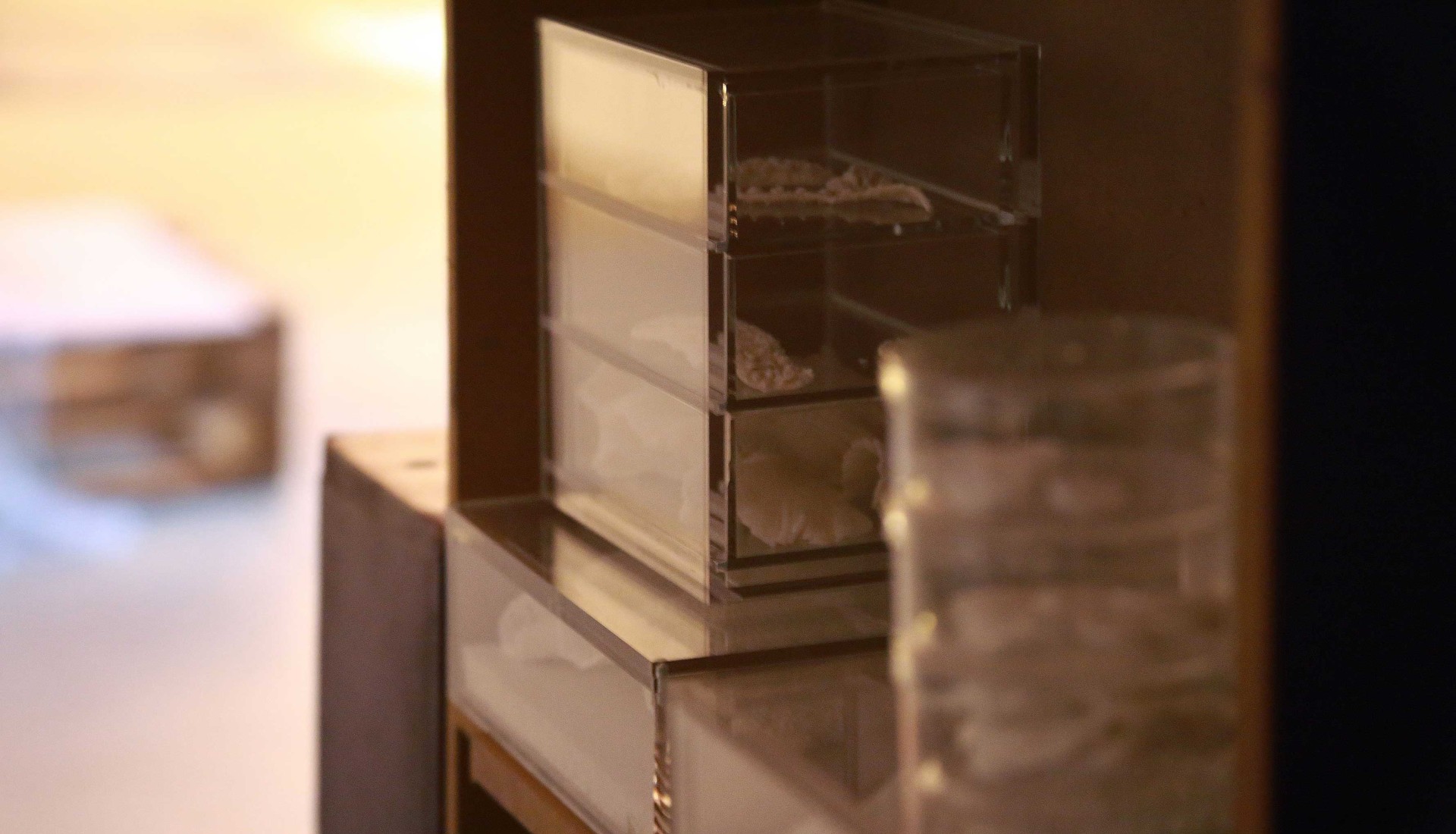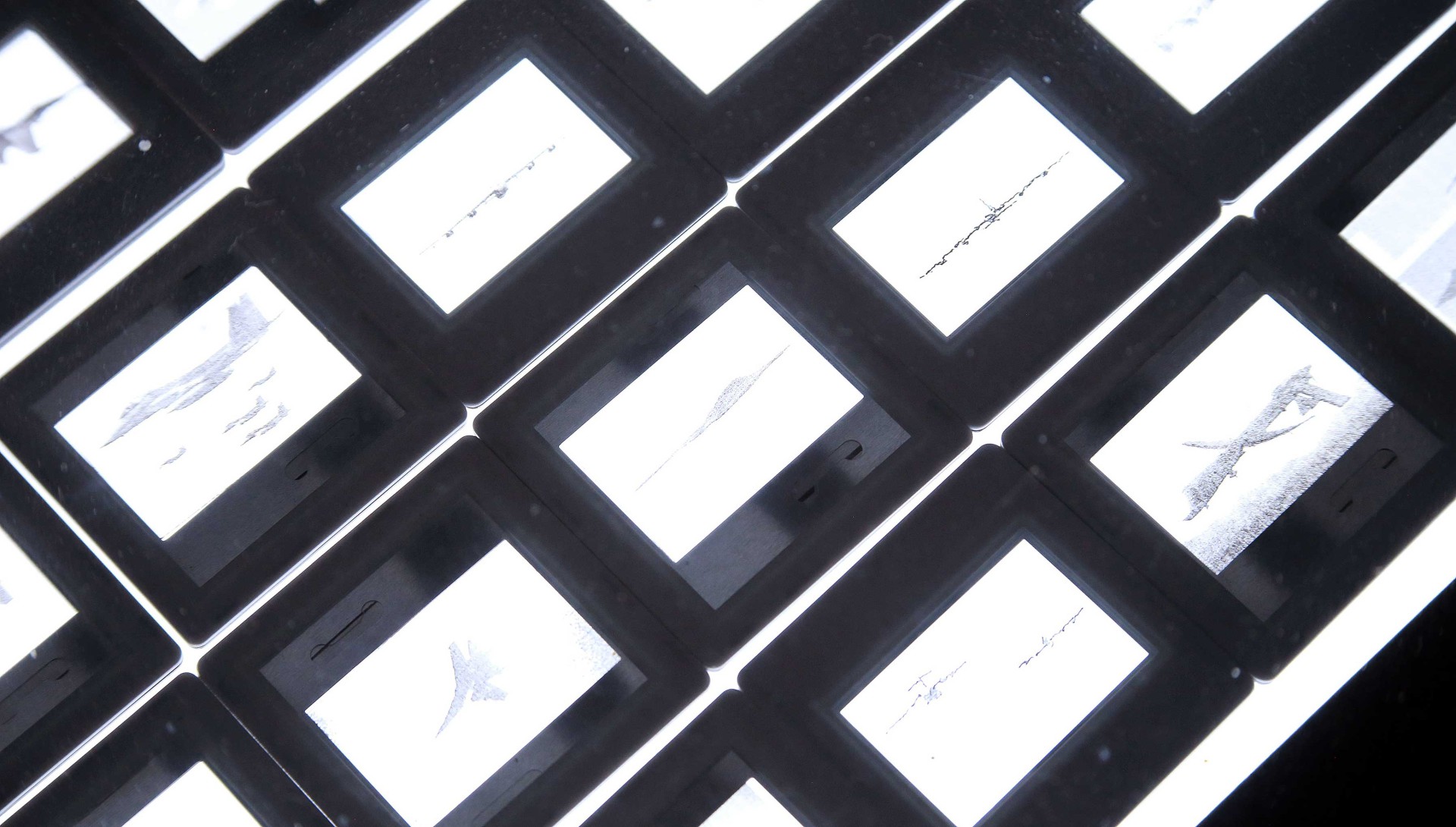Made in Filanda, 2015
Installation: Bic pen on paper, table, benches, bookcases, books, found objects, diapositives, video, dimensions variable
Thresholds are delineated at the edges (of cities, maps and power systems), one of the last surviving hopes in the face of a forced normalisation of the contemporary world: along these edges arises a kind of third mental and anthropological landscape which feeds as much upon the demands of the system as it does on something totally out of its control, irreverent and fortuitous, and projected in a non-frontal and germinative logic. These liminal regions – that can in some ways be likened to Akim Bey’s TAZ or what Graeber has defined as Zones of Cultural Improvisation (only less ideological than the former and more stable than the latter) – possess a characteristic of permanency due to their local rootedness and their ability to become established as a centre – simultaneously attractant and propulsive.
In the specific case of the arts, situations such as these are born of the voluntary aggregation of people bearing a wide range of agendas, and they develop by contending and cultivating inner conflict as a factor of their own growing ability to understand the world. Frequently, under these circumstances, there is a critical aspect related to the awareness of belonging, the feeling of continuity and therefore the ability to implement self-narrations portraying their complexities. Giuseppe Stampone gives a new spin to the theoretic and explicit formula of his Architecture of Intelligence, veering it towards a consideration that takes into account several specific traits of the dimension anchored to the areas and the propositive intentions of these communities – detailed systems which share autonomy of judgment and creative fecundity. Beginning with the encounter with the Madeinfilandia project (a “place invented by artists for artists in order to create opportunities for a direct in-depth analysis of art and of themselves”), Stampone has developed a model of representation which experiments with a three-dimensional and open narration that can be consulted and revised.
What guides the aesthetic of this version of Architecture of Intelligence is first and foremost a physical and sensory element: the space in which the work originally took shape coincides with the context the work refers to (in the figurative modes used for its expression). The artist conceives this work as a synthesis of a relational condition deeply connected to the contextual components of all human variables – creative and moral – that intersect at a given moment in a precise place – in this case a disused spinning mill in the Tuscan countryside. Such a simultaneous presence is immediately perceived as positive and propositive, replete with possibilities thanks to its dilapidated and mobile dimension. Architecture of Intelligence interprets all of this by gathering personal objects and small collective totems, works by the inhabitants of the mill, their books and some other volumes, testimonies of other transitions, rare promotional materials and giveaways. It all takes place above and around a network of furniture and other frames reminiscent of the blown-up axonometrics recurrent in Stampone’s drawings. Only in this case, they form the radiant centre of the entire composition and distinguish headwords, shapes and diagrams as so many keys with which to penetrate and explore the architecture. The place in which the installation materialises becomes symbolic thanks to the transformation carried out by the work itself, although it retains intact the power of its specific being within its context, as it opens onto a new extension capable of detaching itself from its circumstances. It is the horizontal level upon which the sketches are placed that supplies the lever for a vertical reversal to make the work three-dimensional and therefore social and dynamic, the formal synthesis of a variety of actions and relations.
The narration stemming from Architecture of Intelligence distances itself from hegemonic narrations which, by definition, tend to simplify, assimilate pre-existing models and schematise relationships. The trust Stampone’s work declares in autonomy of thought, communities and the connections that make them intelligent is expressed in the educational function attributed to art and the transformations it produces, navigating through multiple dialogues – taking “dialogue” in its etymological sense of words, in their spoken form as well as the space between them – as it moves towards the construction of commonality.
